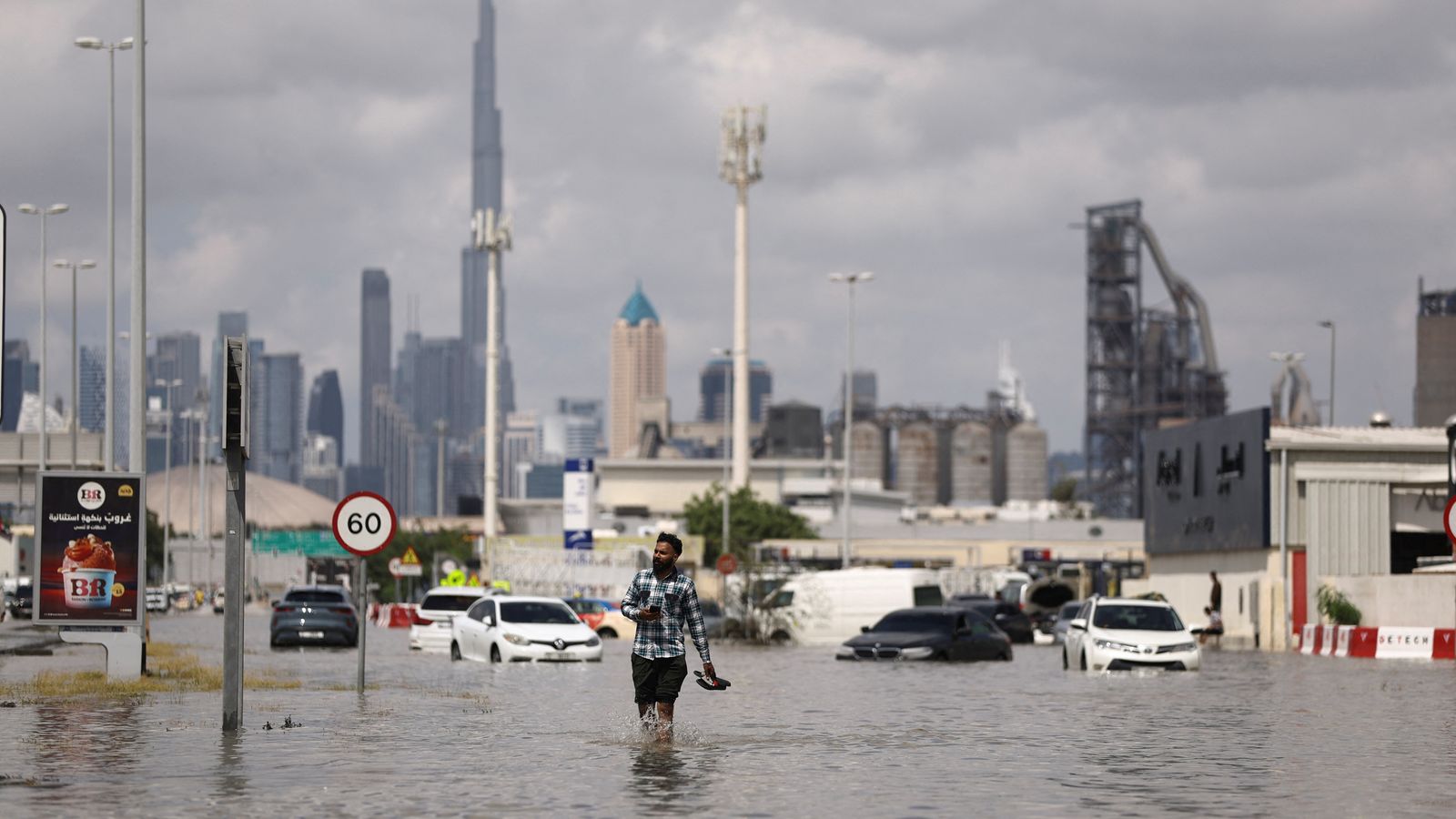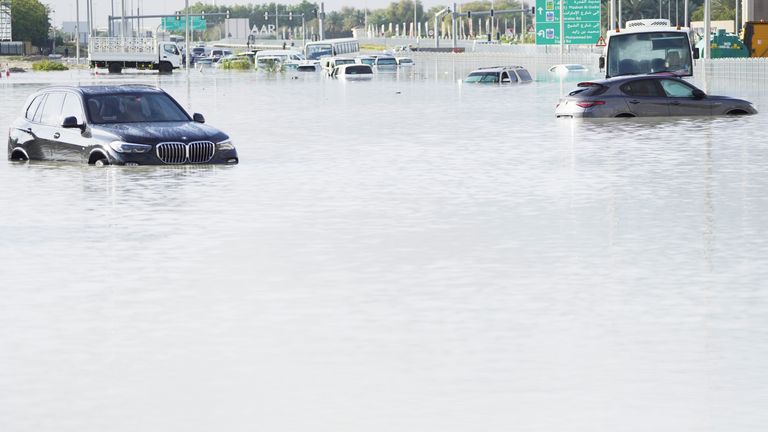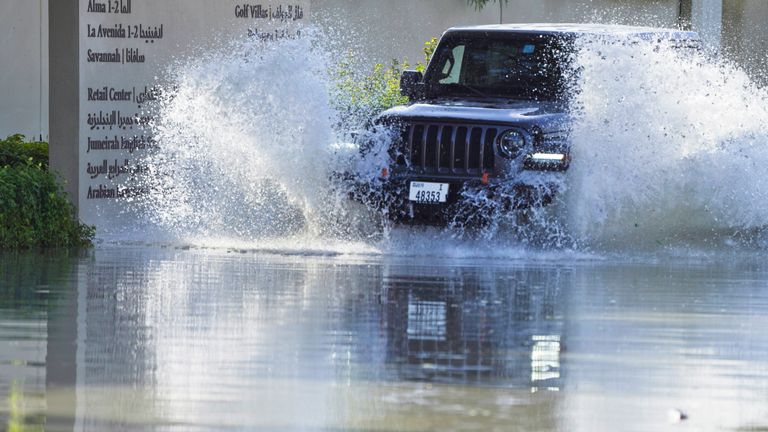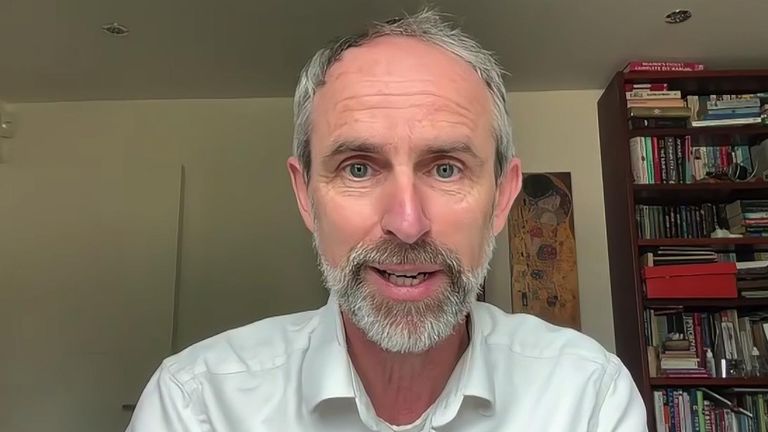A record amount of rainfall was said to have caused “absolute carnage” in Dubai on Tuesday – with schools closed, flights suspended and people working from home.
More than 14cm (5.6 inches) of rain soaked the United Arab Emirates (UAE) city on Tuesday – the heaviest rainfall there since records began in 1949, the state-run WAM news agency said.
As people in Dubai continue to face disruption due to the downpours, some have suggested the rain could have been caused by a practice carried out by humans known as “cloud seeding”.
Here we take a look at what the process involves and whether it was responsible for Dubai’s wet Tuesday.
What is cloud seeding?
The practice is a type of weather modification process whereby small planes fly through clouds burning salt flares which can increase precipitation to help make it rain.
The UAE, located in one of the hottest and driest regions on Earth, has been leading the effort to seed clouds and increase precipitation.
Did cloud seeding cause the storm?
Following the downpour, several reports quoted meteorologists at the National Centre for Meteorology, the UAE’s meteorology agency, as saying they flew six or seven cloud seeding flights before the rain.
Flight-tracking data showed that one aircraft linked to the UAE’s cloud seeding efforts flew around the country on Sunday.
However, the meteorology agency told Reuters news agency there were no such operations before the storm.
It comes as a number of experts have also said it is unlikely the downpours would have been caused by cloud seeding.
What have the experts said?
Sky News weather producer Chris England said he doubted cloud seeding contributed to the downpour, as the evidence of the practice working is “pretty slim at best”.
He added: “Some studies have indicated climate change will bring an increase in rainfall to the area.”
Friederike Otto, a senior lecturer in climate science at Imperial College London, also said it was misleading to talk about cloud seeding as the cause of the rainfall.
“Cloud seeding can’t create clouds from nothing. It encourages water that is already in the sky to condense faster
and drop water in certain places. So first, you need moisture,” she said.
“Without it, there’d be no clouds.”
Update:
TOWIE stars stranded by floods forced to hitchhike
Ms Otto added that rainfall was becoming much heavier around the world as the climate warms because a warmer atmosphere can hold more moisture.
Professor John Marsham, Met Office joint chair at the University of Leeds, said speculation around cloud seeding is a “distraction from the real story here”.
“We know that man-made climate increases extreme rainfall – this is well understood physics as warm air holds more water.
“A rainfall event such as the one that caused the Dubai floods, which covered a large area and where over Dubai a year’s worth of rain fell in one day, cannot happen without large-scale weather conditions driving enormous convergence of water vapour in the atmosphere and so extreme rainfall.
“Any possible effect of any cloud seeding in these circumstances would be tiny.”
Professor Maarten Ambaum, a meteorologist at the University of Reading who has studied rainfall patterns in the Gulf region, said: “The UAE does have an operational cloud seeding programme to enhance the rainfall in this arid part of the world, however, there is no technology in existence that can create or even severely modify this kind of rainfall event.”
Read more from Sky News
What missiles could Israel use in an attack?
Shannon Matthews’ kidnapper dies
Scotland set to scrap key climate targets
If it wasn’t cloud seeding – what did cause the storm?
Prof Ambaum said the UAE is characterised by long periods without rain and then “irregular, heavy rainfall”.
He added: “These storms appear to be the result of a mesoscale convective system – a series of medium-sized thunderstorms caused by massive thunderclouds, formed as heat draws moisture up into the atmosphere. These can create large amounts of rain, and when they occur over a wide area and one after another, can lead to seriously heavy downpours. They can rapidly lead to surface water floods, as we have seen in places such as Dubai airport.”
Meanwhile, climate scientists say that rising global temperatures, caused by human-led climate change, are leading to more extreme weather events around the world, including intense rainfall.
Esraa Alnaqbi, a senior forecaster at the UAE’s National Centre of Meteorology, has said climate change likely contributed to the storm.
She said the Dubai downpour came after a low pressure system in the upper atmosphere and low pressure at the surface acted like a pressure “squeeze” on the air.
That squeeze, intensified by the contrast between warmer temperatures at ground level and colder temperatures higher up, created the conditions for the powerful thunderstorm, she said.







